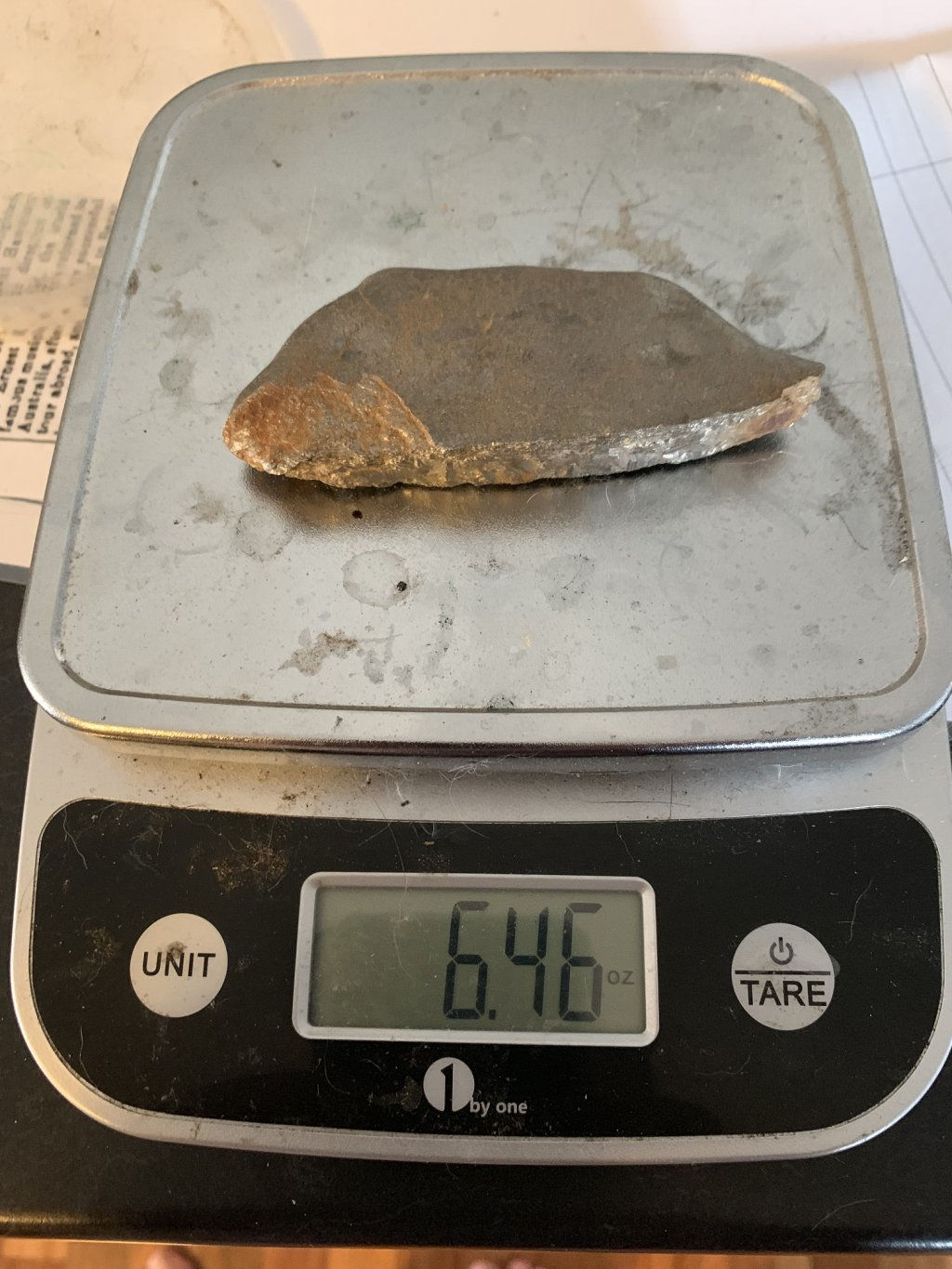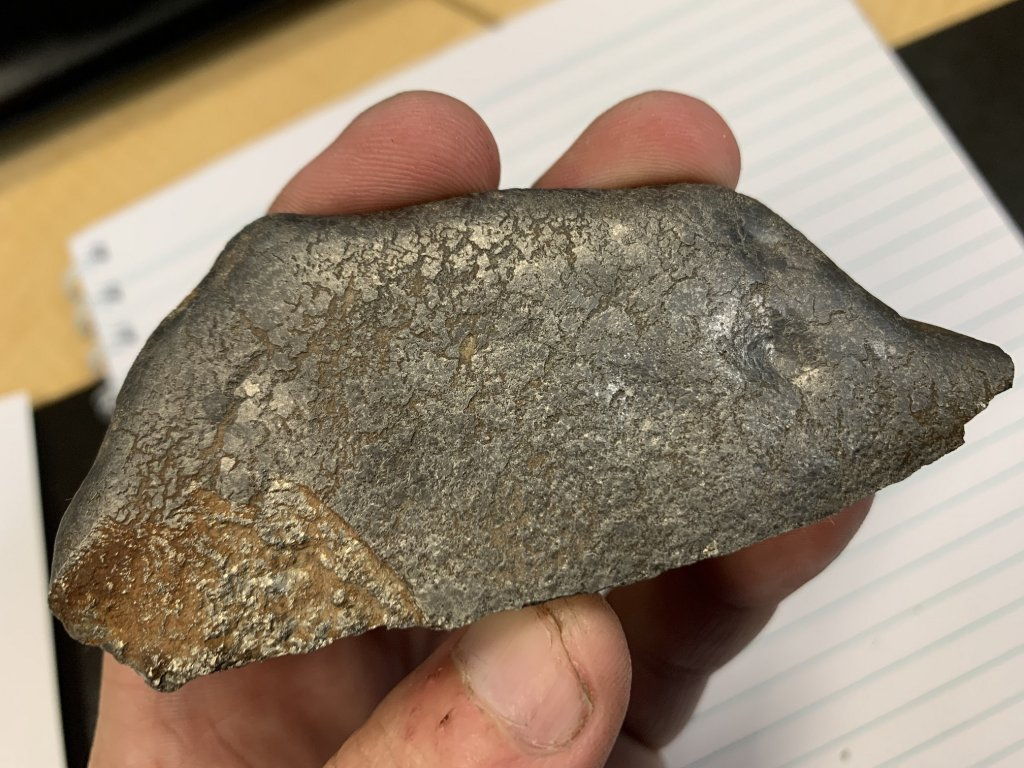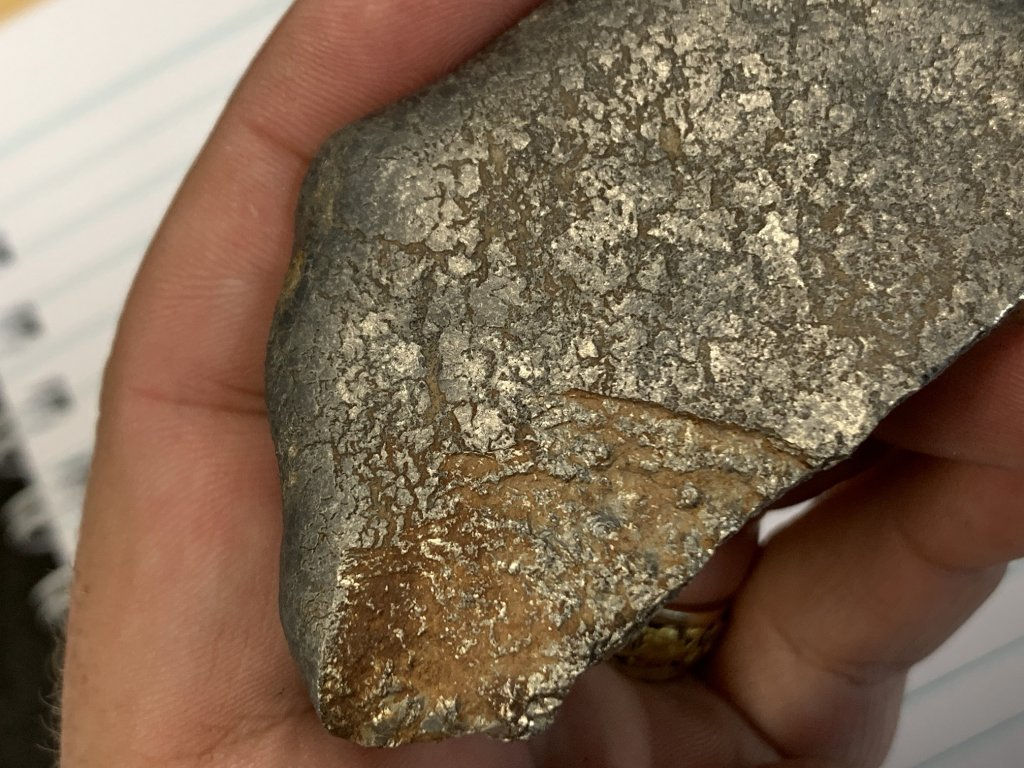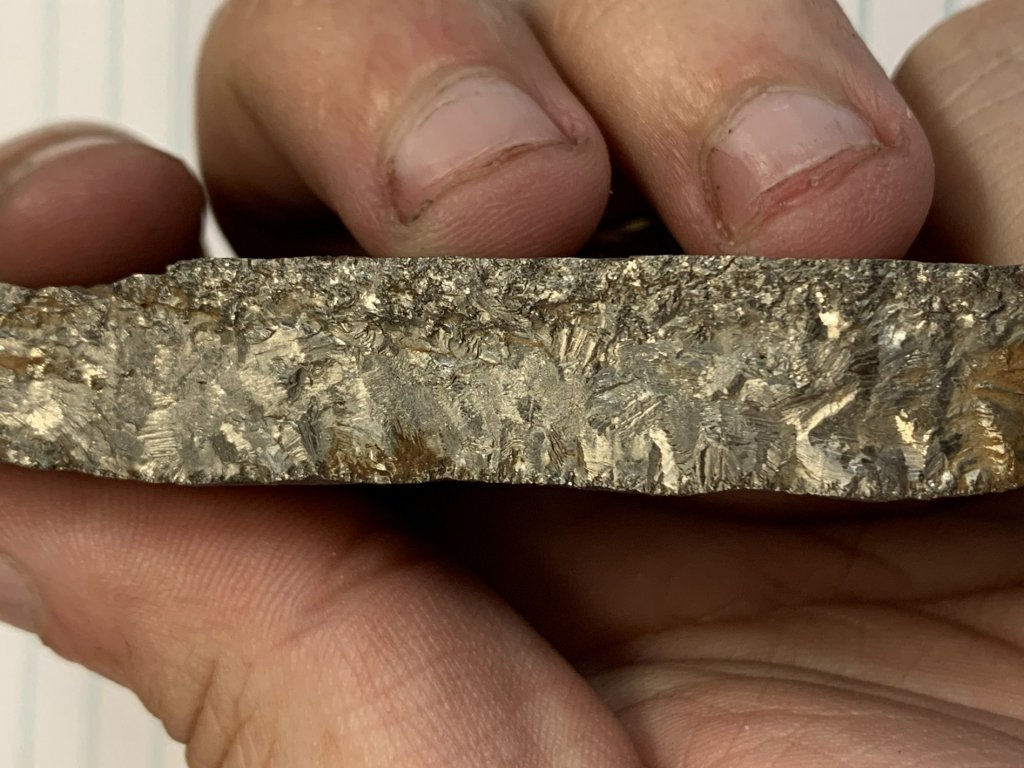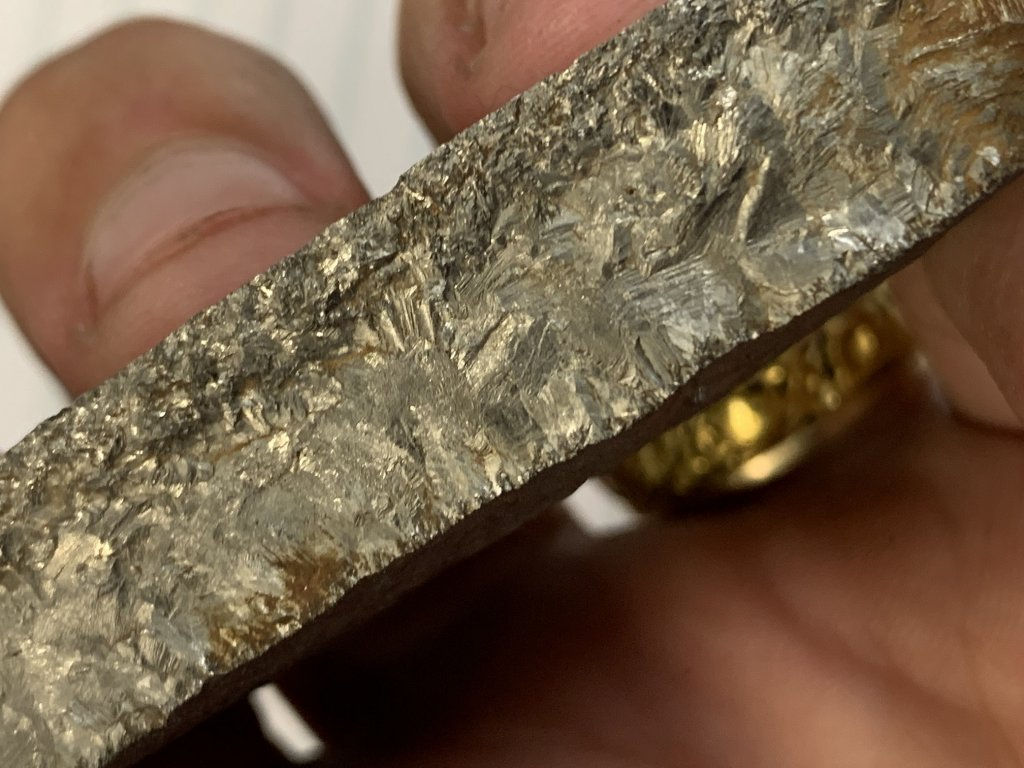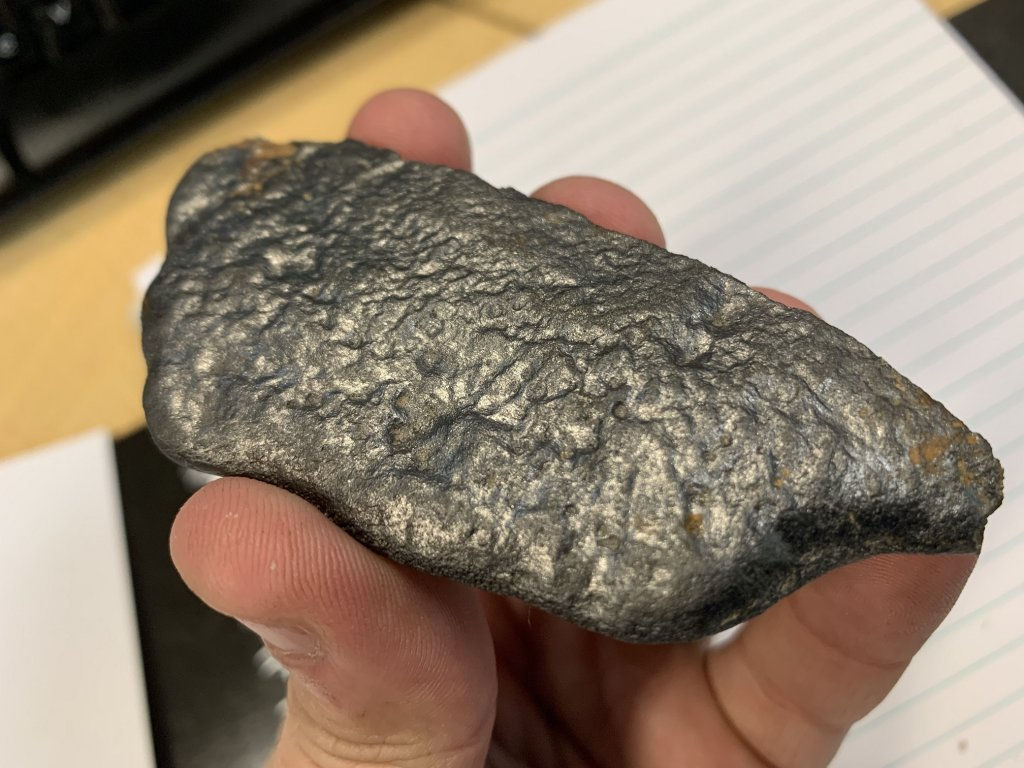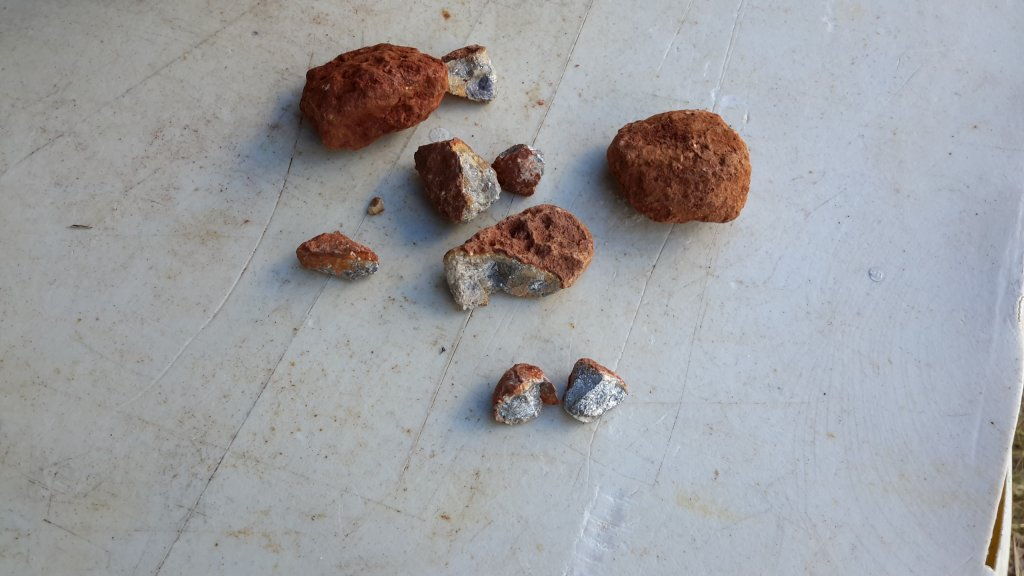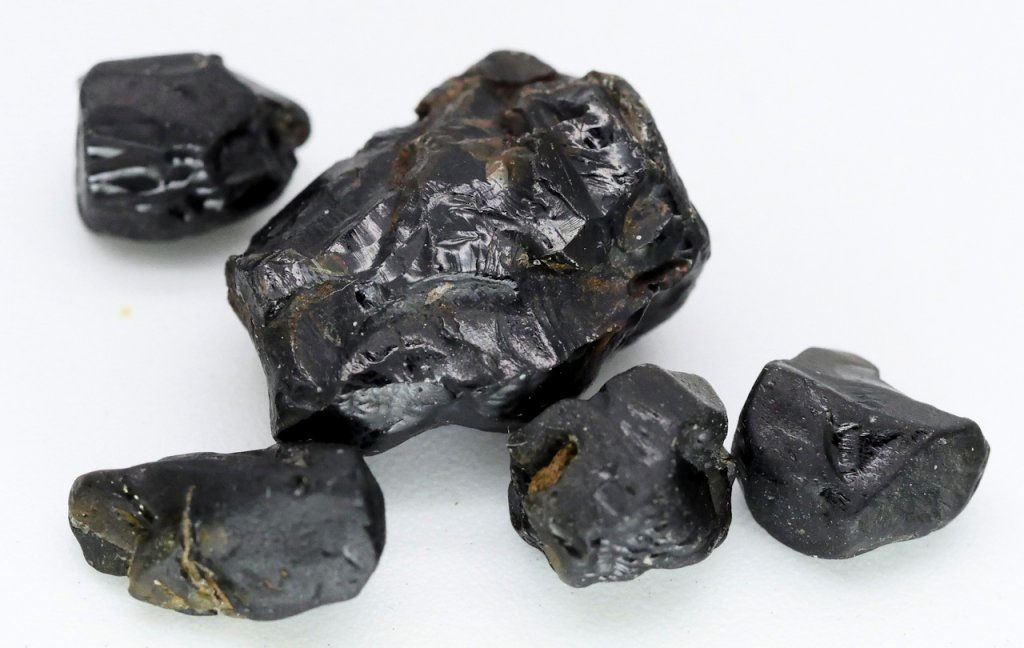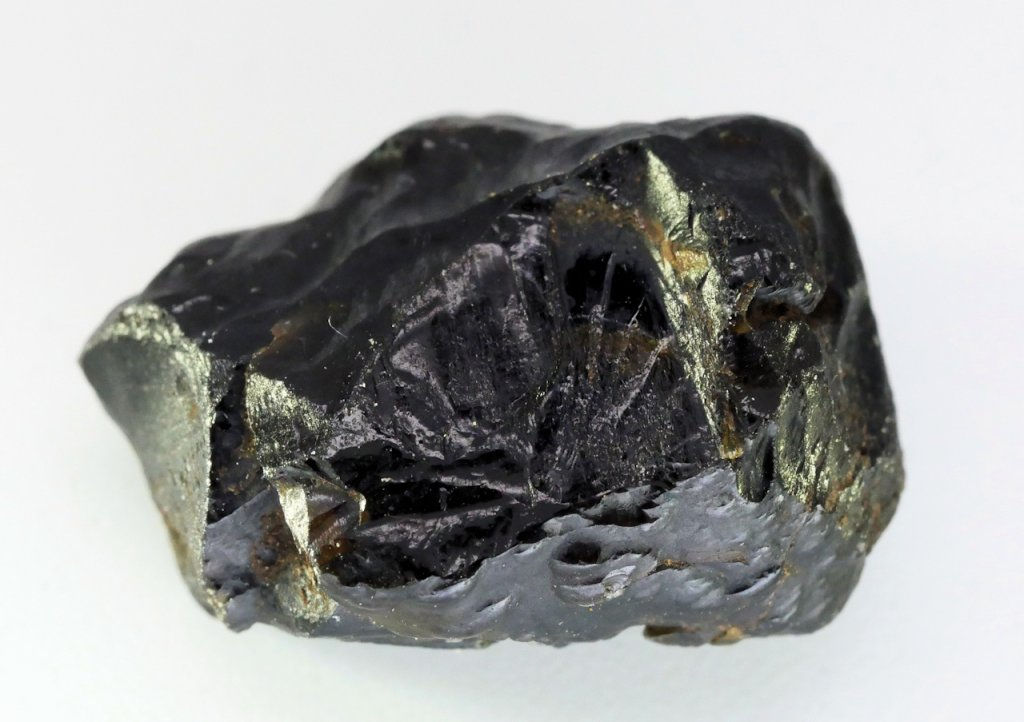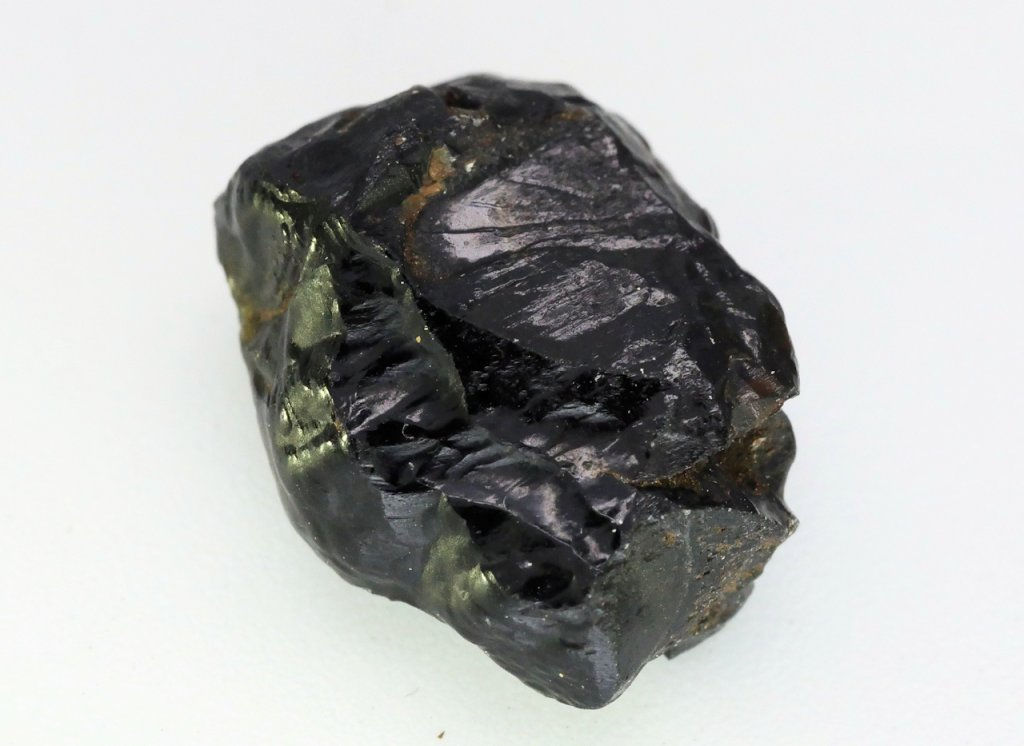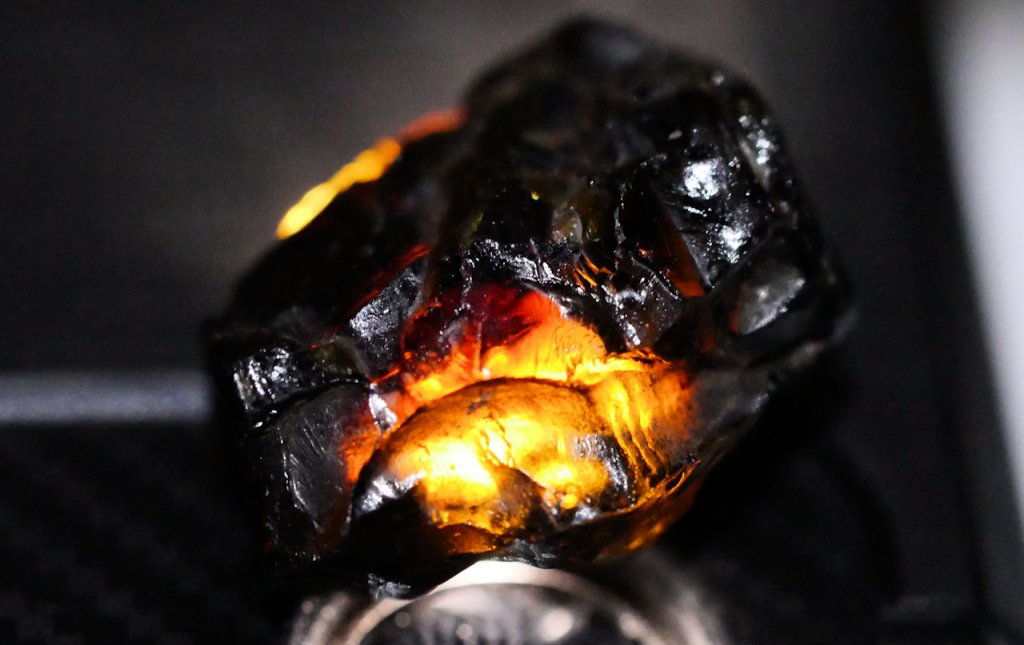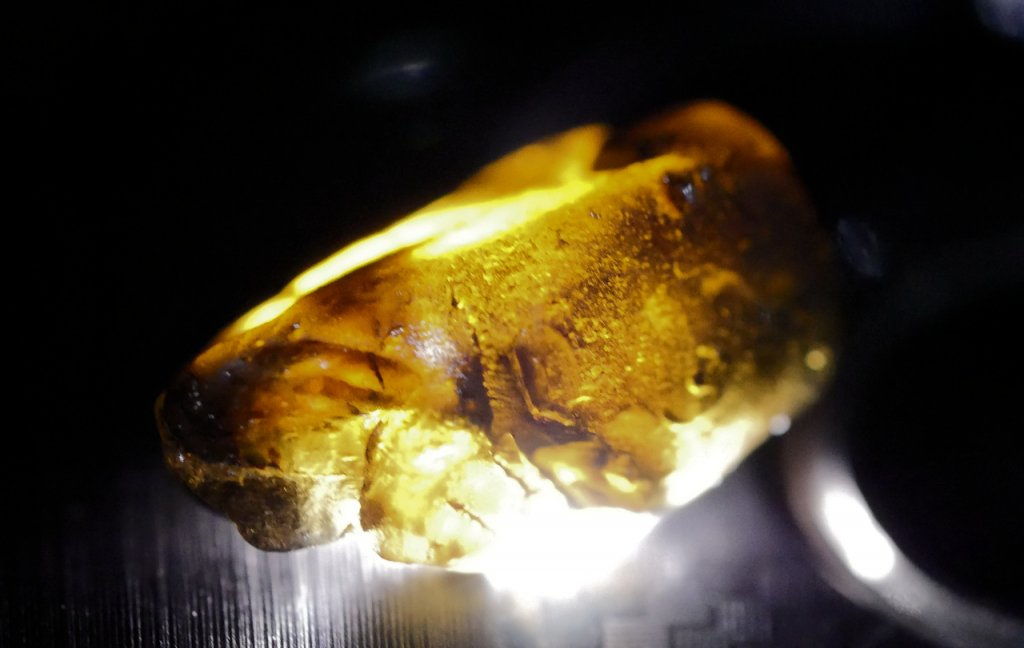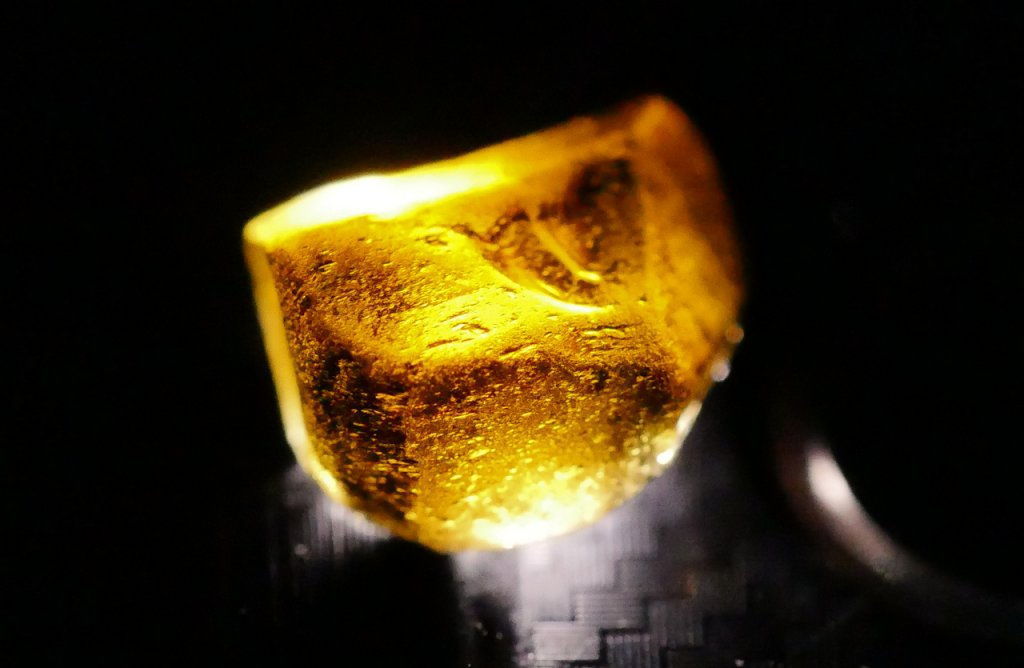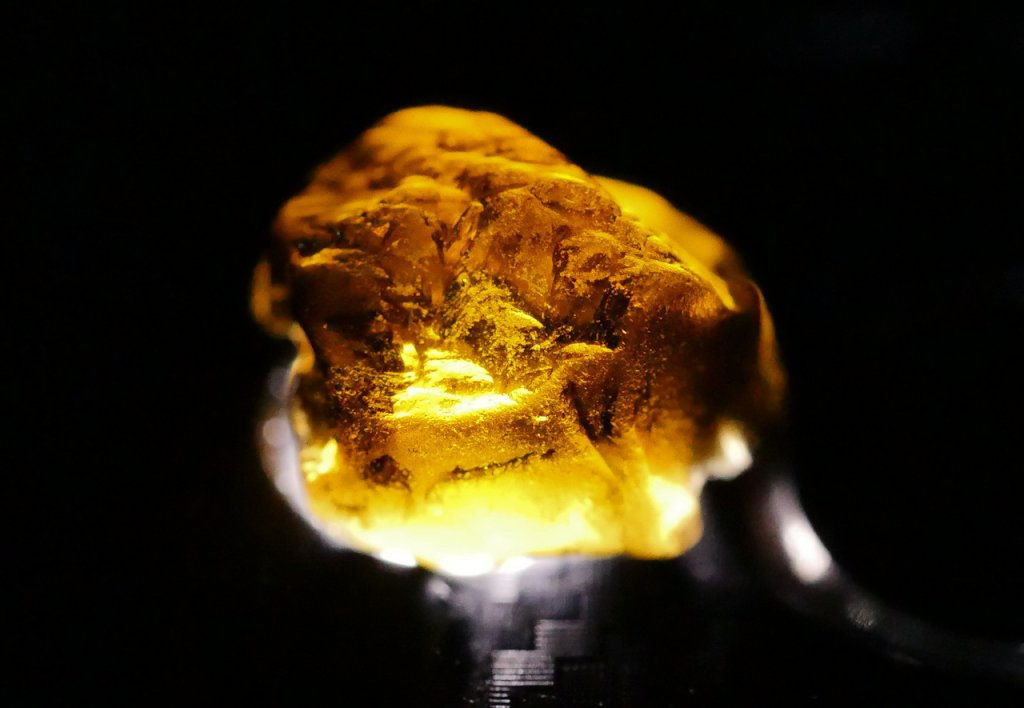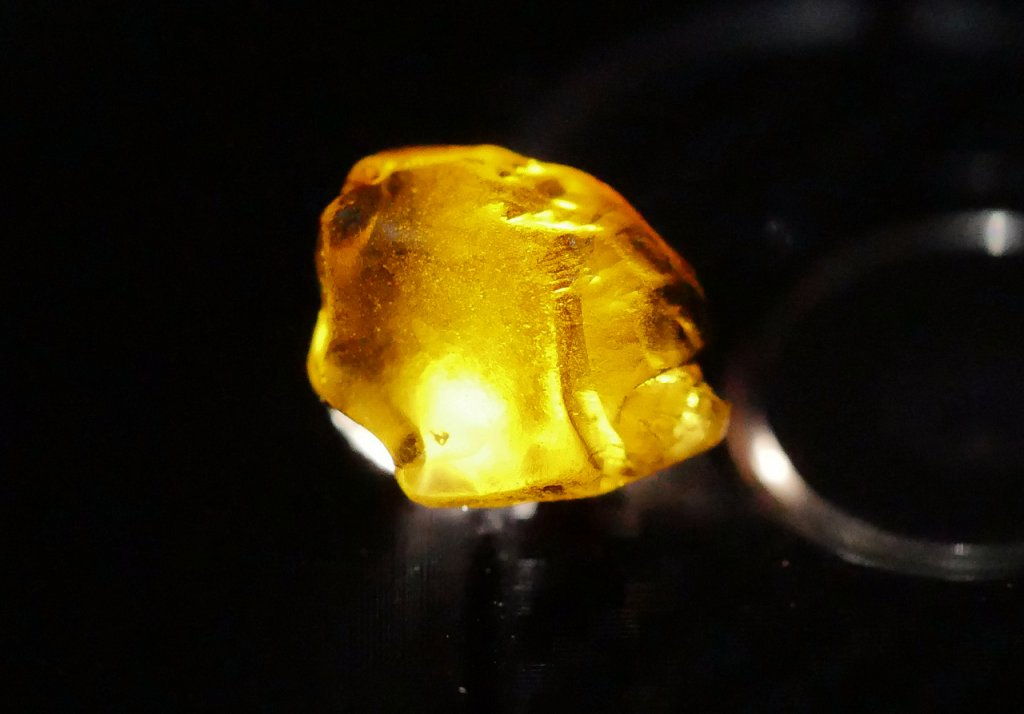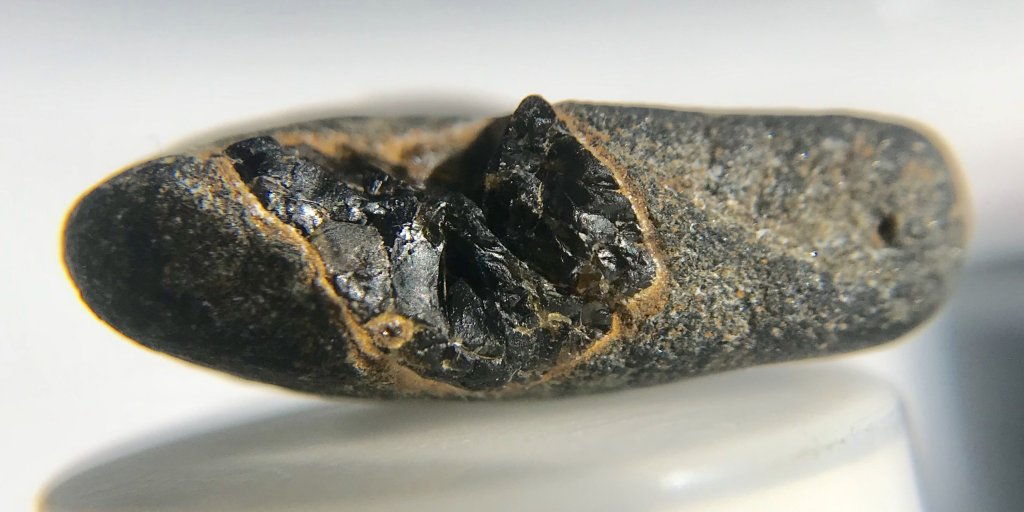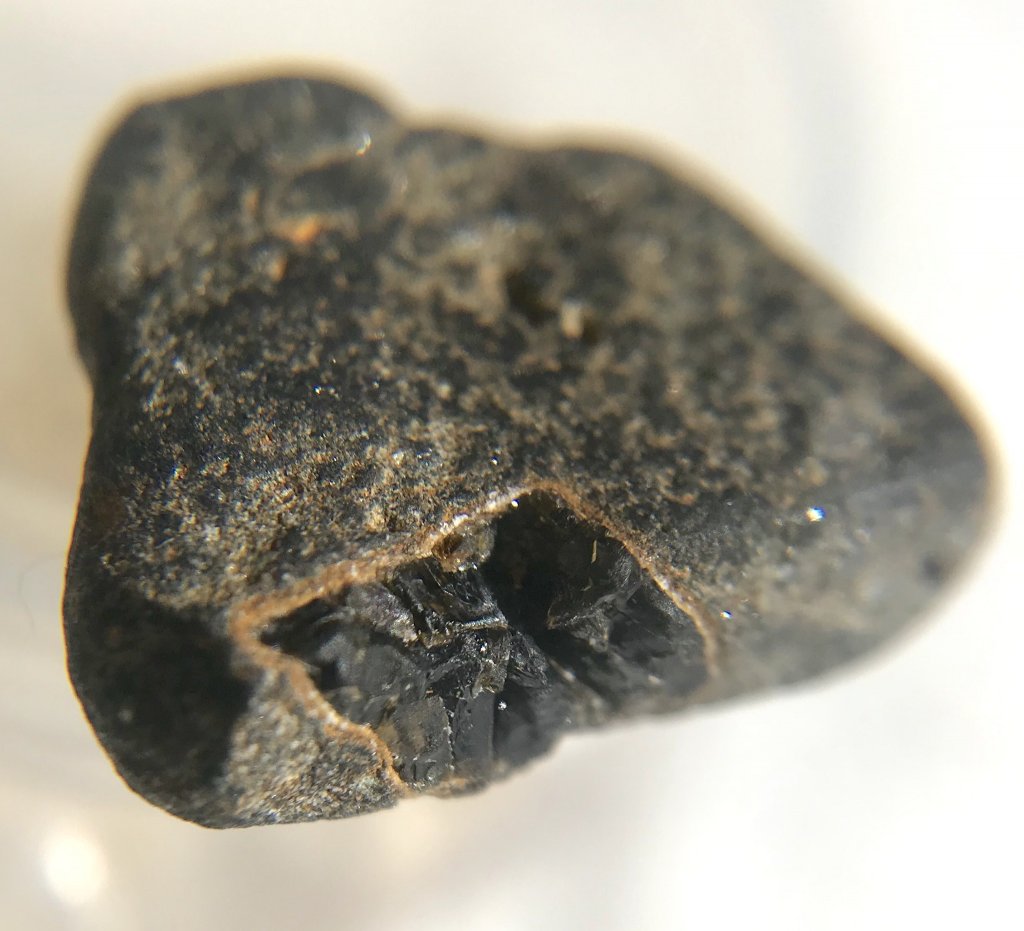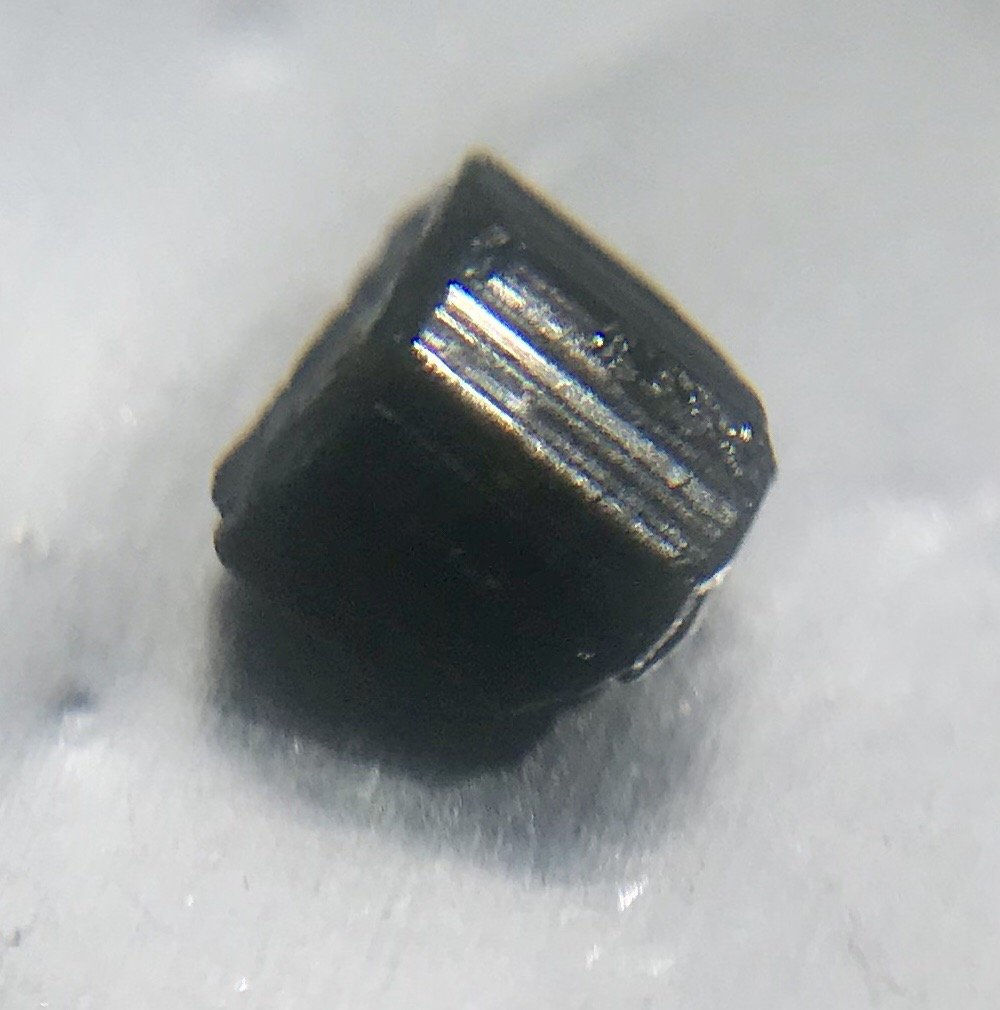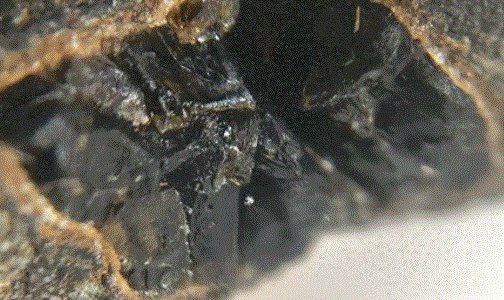MartyZ came over a couple of weekends ago with some interesting stones, when here was here I SG tested them all as a starting point to try and identify what they are, since then a bunch more tests have been done and we are pretty much still at square 1, we have absolutely no clue as to this mineral's identity.
The first three photos are the rocks as one see's them in normal light, the clutch of stones are the sort of stone that would catch your eye in a sieve, then the next two are a more detailed study of the larger 12.95ct stone showing the fracture structure, which I think would be referred to a random, it doesn't appear to show ant distinct fracture planes, but better and more experienced eyes can correct me on this.
Then we added light, and wow the colour is amazing, first pic is the big stone:
These are the SG results for the stones: The large 12.95ct stone is 3.364, the smaller sones are 3.3, 3.24, 3.46 and two at 3.5 so there is a fair bit of variation, that said my scales only go down to 0.5ct so smaller stones will never be super accurate.
Moh is in the order of 6.5 as quartz (7) will scratch but Labradorite/Feldspar (6-6.5) wont scratch.
Streak test is white and the stones do not respond to 365nm UV, neither are they radioactive as one of our earlier suspicions was a type of Ekanite which contains Thorium, so this had to be eliminated.
We are now at a complete loss as to what these are. MartyZ will add some more info.
Over to the Brains trust for ideas please as we are out of them and can find nothing that fits and I think both of us anve spent many hours on the net researching.
Maybe we have a new discovery; "Zivianite"

or "Ziviahuskite" ??







